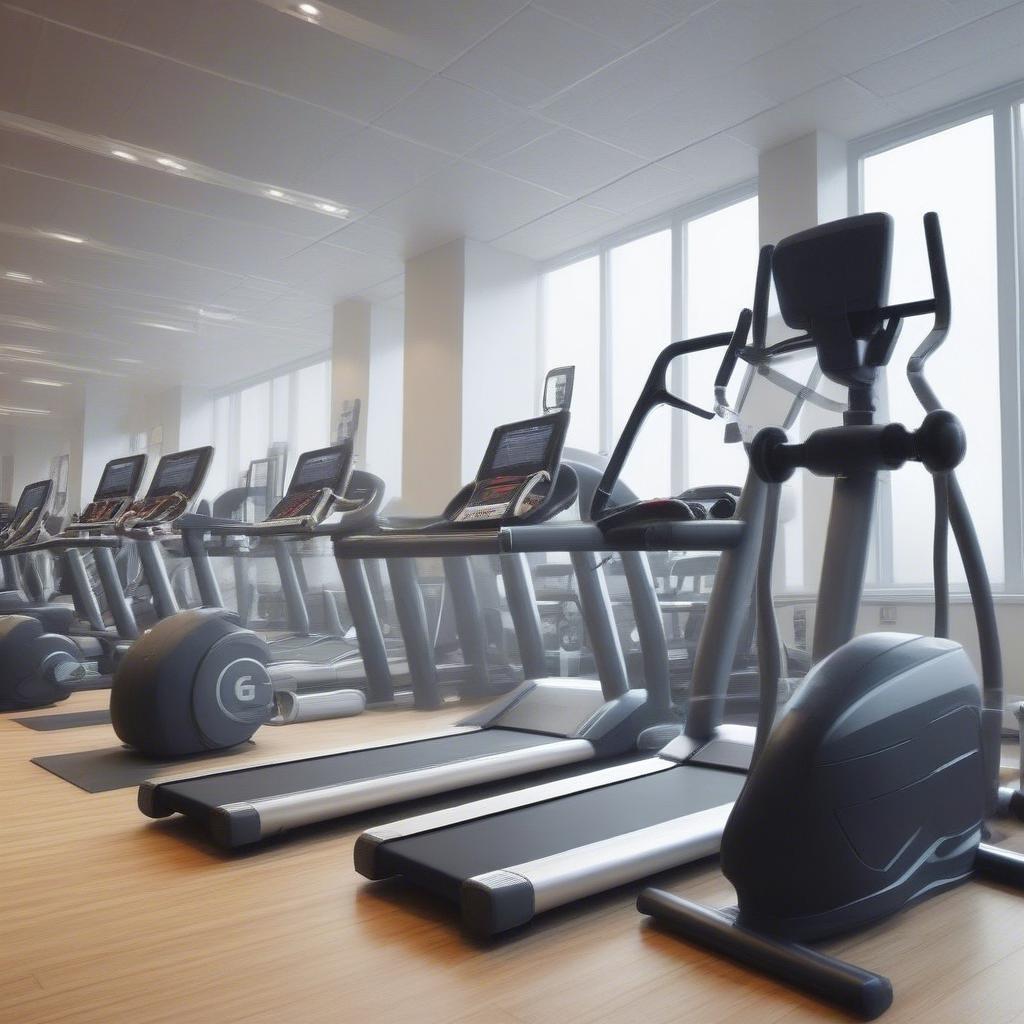
Ensuring Compliance with Health and Safety Regulations in Your Gym
The Foundation of a Safe and Thriving Fitness Community
Running a successful gym is about more than just having the latest equipment and the trendiest classes. At its core, it’s about fostering a safe and healthy environment for your members and staff. Ignoring gym health regulations and neglecting safety compliance isn’t just a legal risk; it’s a moral one. It erodes trust, puts people in harm’s way, and ultimately impacts your bottom line. Let’s dive into the critical aspects of ensuring your fitness center standards are not only met, but exceeded.
Why Prioritize Health and Safety Compliance in Your Gym?
- Protecting Your Members: Your primary responsibility is the well-being of everyone who walks through your doors. Safety compliance minimizes the risk of accidents, injuries, and health issues. This fosters an environment where members feel secure and can focus on their fitness goals.
- Protecting Your Staff: Your team is the backbone of your gym. Creating a safe workplace is crucial for their physical and mental well-being. Proper safety protocols protect them from potential hazards and contribute to a positive and productive work atmosphere.
- Legal Obligations: Gyms are subject to a wide range of health and safety regulations. Non-compliance can lead to hefty fines, lawsuits, and even forced closure. Staying informed and adhering to these standards is not optional; it’s a legal necessity.
- Reputation and Brand Image: A gym with a strong safety record attracts and retains members. Conversely, a single safety incident can severely damage your reputation, leading to lost business and a negative public perception.
- Business Sustainability: A safe and compliant gym is a sustainable one. By investing in health and safety, you minimize potential liabilities, lower insurance premiums, and build a loyal community of members who trust you.
Understanding Key Gym Health Regulations
Navigating the complex landscape of gym health regulations can feel overwhelming. However, understanding the core requirements is crucial for compliance. These regulations typically fall into several categories:
- Facility Safety: This includes maintaining safe equipment, proper ventilation, adequate lighting, and regular inspections to identify and rectify hazards.
- Hygiene and Sanitation: Gyms are breeding grounds for germs. Implementing strict hygiene protocols, providing hand sanitizers, and ensuring regular cleaning of equipment are paramount.
- Emergency Preparedness: Having clearly defined emergency procedures, well-stocked first-aid kits, and trained staff who can respond effectively in crises is non-negotiable.
- Staff Training: Staff need thorough training on safety procedures, emergency response, and proper use of equipment. Regular training ensures they are up to date on best practices.
- Documentation and Record-Keeping: Accurate documentation of safety checks, staff training, incidents, and maintenance logs are essential for legal compliance and process improvement.
Deep Dive: The Practical Steps to Safety Compliance
Now that we have the foundation, let’s explore the practical steps you can take to ensure your gym operates safely and meets all necessary fitness center standards.
1. Regular Equipment Maintenance: Preventing Accidents Before They Happen
- Daily Checks: Implement a daily checklist for staff to quickly assess equipment for visible damage, loose parts, or wear and tear.
- Example: A checklist might include checking treadmill belts, weight machine cables, and securing loose bolts on racks.
- Scheduled Maintenance: Establish a schedule for regular professional maintenance. Depending on the usage and type of equipment, this might be weekly, monthly, or quarterly.
- Template: Create a spreadsheet to track maintenance dates, issues identified, and actions taken. Include details like date of service, part replaced, service provider and service next date.
- User Manuals and Guides: Ensure user manuals are readily available for all equipment. Provide guidance and signage with usage instructions and warnings.
- Tip: Create QR codes on equipment that link to videos explaining safe and correct operation.
- Out-of-Order Protocol: If equipment is damaged, have a clear "out of order" process. Place clear signs and remove it from use until repaired.
- Actionable Step: Create bright yellow "Out of Order" tags that staff can quickly and easily attach to malfunctioning equipment.
2. Maintaining Impeccable Hygiene and Sanitation: Protecting Against Germs
- Cleaning Schedule: Implement a strict cleaning schedule, detailing the frequency and method for each area of the gym. High-touch areas like equipment handles, water fountains, and door handles require more frequent attention.
- Example: Surfaces might need cleaning hourly, while floors require daily deep cleaning.
- Cleaning Supplies: Provide readily available cleaning supplies for members and staff, including disinfectant wipes and hand sanitizer stations.
- Tip: Place strategically located hand sanitizers near entry points, equipment areas, and bathrooms.
- Ventilation and Air Quality: Ensure your gym has proper ventilation to prevent the build-up of moisture and germs. Consider regular duct cleaning to ensure fresh air circulation.
- Actionable Step: Invest in air purifiers with HEPA filters to enhance air quality.
- Personal Hygiene Promotion: Encourage members to practice good hygiene by posting reminders, providing tissues, and urging them to wipe down equipment after use.
- Example: Post signs stating, "Clean equipment for your safety and for others."
- Deep Cleaning: Schedule regular deep cleaning of the entire facility, including floors, bathrooms, and changing areas.
3. Establishing Robust Emergency Preparedness: Being Ready for Anything
- Emergency Plan: Develop a comprehensive emergency plan outlining procedures for various scenarios, such as medical emergencies, fires, and severe weather.
- Template: Your emergency plan should include: contact details for emergency services, evacuation procedures, first-aid locations, roles and responsibilities of staff members.
- First-Aid Kits: Ensure you have well-stocked first-aid kits in easily accessible locations and regularly check their contents for expiry dates and replace supplies as needed.
- Actionable Step: Create a checklist of essential first-aid items, ensure it is checked weekly, and items are replaced accordingly.
- AED (Automated External Defibrillator): Consider having an AED on site and training staff on its proper use. AEDs can be life-saving in cases of sudden cardiac arrest.
- Tip: Invest in regular training on CPR and AED use for your staff.
- Emergency Contact Information: Maintain up-to-date emergency contact information for all members and staff.
- Template: Create a secure database of emergency contacts and update it regularly.
- Clear Signage: Ensure emergency exits, first-aid kits, and other crucial locations are clearly marked with easily visible signage.
- Actionable Step: Walk through the gym as if you are a first-time member and see if the signage is easy to understand.
4. Comprehensive Staff Training: Empowering Your Team for Safety
- Safety Orientation: Conduct thorough safety orientation for all new hires, covering gym health regulations, emergency procedures, and equipment operation.
- Template: Develop an onboarding checklist for new staff to ensure they receive thorough training.
- Regular Safety Training: Conduct periodic safety training sessions for all staff members to update them on new procedures and reinforce best practices.
- Example: You could hold a short monthly training session on a particular safety procedure.
- CPR and First-Aid Certification: Ensure a significant portion of your staff is certified in CPR and first aid. This training is invaluable in handling emergencies effectively.
- Actionable Step: Schedule periodic certifications for staff members through a recognized training provider.
- Equipment Training: Provide specific training on the safe use of each piece of equipment. This includes proper techniques, potential hazards, and how to assist members safely.
- Tip: Create visual aids or videos that illustrate the safe use of each piece of equipment for reference.
- Incident Reporting: Train staff on how to properly document and report any safety incidents or near misses. This reporting process is crucial for identifying potential risks.
5. Maintaining Thorough Documentation and Record-Keeping: A Legal Safeguard
- Maintenance Logs: Maintain detailed logs of all equipment maintenance, including dates, issues addressed, and actions taken.
- Template: Use a digital or hard copy log to document maintenance details for each piece of equipment.
- Training Records: Keep a record of all staff training, including dates, topics covered, and staff participation.
- Example: Maintain a folder for each staff member with a record of completed safety training.
- Incident Reports: Document all incidents and accidents, no matter how minor. Include details like date, time, location, people involved, and actions taken.
- Actionable Step: Create a user-friendly incident report form that staff can easily fill out.
- Inspection Checklists: Create and use checklists for all routine inspections, including safety checks, hygiene inspections, and equipment assessments.
- Tip: Digital checklists can help streamline the inspection process and track completion.
- Legal Documents: Ensure your gym has proper liability waivers, membership agreements, and insurance coverage that comply with all relevant regulations.
- Actionable Step: Consult with a legal professional to review and update your legal documentation regularly.
Leveraging Technology for Improved Safety Compliance
Technology can play a significant role in streamlining safety compliance and enhancing the overall safety of your gym.
- Digital Checklists: Use digital checklist apps to manage routine inspections and maintenance schedules. These apps can automate reminders and track completion.
- Equipment Monitoring Systems: Some modern gym equipment has built-in monitoring systems that can alert you to potential issues or maintenance needs.
- Video Surveillance: Install cameras in strategic areas of the gym to monitor safety and security and investigate incidents.
- Online Training Platforms: Utilize online training platforms to deliver safety training to staff, making it more accessible and convenient.
- Membership Management Systems: Utilize membership systems that include emergency contact information, making it easily accessible when needed.
Continuous Improvement: A Commitment to Excellence
Safety compliance isn’t a one-time event; it’s an ongoing process that requires continuous improvement.
- Regular Audits: Conduct periodic internal audits to identify potential gaps in your safety protocols.
- Tip: Seek a third party to perform an audit, so that issues can be identified from a new perspective.
- Feedback Collection: Solicit feedback from members and staff on their safety concerns.
- Actionable Step: Place feedback forms at strategic points or create a digital feedback form on your website.
- Stay Updated: Stay informed about changes in health and safety regulations and adjust your protocols accordingly.
- Learn from Incidents: Conduct thorough reviews of all incidents and accidents to identify root causes and implement corrective actions.
Learn Business: Your Partner in Achieving Business Success
As you strive for a safe and compliant gym, it’s essential to have the right tools and guidance. Learn Business understands the unique challenges faced by businesses in the fitness industry. We offer a wealth of resources designed to streamline operations, improve safety practices, and ultimately contribute to your business success.
- Customized Templates: We offer ready-to-use templates for everything from maintenance logs and incident reports to staff training checklists and emergency plans. These templates save you valuable time and effort, allowing you to focus on your core business.
- Step-by-Step Guides: Our detailed guides walk you through the process of implementing safety protocols and ensuring compliance with fitness center standards. These resources break down complex regulations into manageable steps.
- Expert Guidance: Access to experienced business professionals who understand the fitness industry. We provide tailored advice and support to help you navigate the complexities of running a successful gym.
- Business Planning Tools: We provide business planning templates that are specific to the fitness industry to enable your business success. This will allow you to better plan business objectives while maintaining safety standards.
- Continuous Learning: We regularly update our resources to ensure you always have access to the latest information and best practices.
By partnering with Learn Business, you’ll have the confidence and resources to build a safe, compliant, and successful gym that serves your community.
Conclusion: Building a Culture of Safety
Ensuring compliance with health and safety regulations is not just about avoiding fines or lawsuits. It’s about creating a positive and safe environment for everyone. By making safety a priority, you’re not only protecting your members and staff, you’re also building trust, enhancing your brand image, and laying the foundation for a sustainable and thriving business. Use the strategies, templates, and guidance detailed in this article to take action and create a gym where everyone feels safe, supported, and empowered to achieve their fitness goals. The commitment to health and safety will foster a culture of wellbeing that extends far beyond the gym walls. Remember, your proactive approach to safety is an investment in the heart of your community.



Leave a Reply